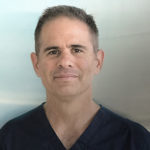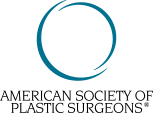
Posted by Laurence Weider on November 18, 2022
In an ongoing effort to provide the best care for my patients, I regularly attend national and local Plastic Surgery meetings. This keeps me up to date with the latest techniques and trends in plastic surgery which I can then offer to my patients. One of the areas that I am most excited about is Soft Tissue Support. What do I mean by that? Let me explain. Many procedures in cosmetic surgery necessitate moving and tightening “soft tissues” such as skin, fat, muscle, fascia, and breast tissue. Fascia is the thin layer of stronger tissues that separate other tissues such as muscle and fat. The pliability or “stretchiness” of soft tissue makes many procedures possible. However, it also means that sometimes results that are initially excellent don’t last as long as patients and their surgeons would like. In order to maintain these outcomes, surgeons have sought out products that can support soft tissues. These products need to be strong but also pliable, and of course, they need to be safe. I am very excited about a few of the absorbable mesh products that are now available. These mesh products come in a variety of shapes and sizes. Depending on the product, they maintain their strength for several months to two years. The basic function of these meshes is to reinforce the soft tissues that are moved during surgery preventing them from stretching. As they are slowly reabsorbed by the body, they are replaced by the patient’s own collagen. When used properly in the appropriate patient, these absorbable meshes maintain the shape created by the surgeon allowing for a great long-term result.
So where do I use these absorbable meshes? In my practice, I use them in all types of cosmetic breast surgery. Most commonly, I use them in selected breast lifts with or without breast implants. They act like an “internal bra” supporting the skin and breast tissue and maintaining the shape and position of the breast lift. The mesh is sutured in place after the skin and breast tissue are rearranged. They serve to take the tension off the skin so that it is less prone to stretching after surgery. The newest meshes are thin and pliable to minimize the chance that the patient will feel them.
Other uses of absorbable mesh include reinforcing repairs when a patient is undergoing correction of “bottoming out” of breast implants. I do this by repairing the breast implant pocket and then suturing the mesh into place over the implant pocket repair. This helps to prevent stretching of the implant pocket and therefore helps to maintain the proper position of the implants and the breast shape.
Another area in which I sometimes recommend the use of absorbable mesh is during tummy tucks. The most common situation is to reinforce the abdominal wall tightening in someone whose abdominal wall fascia is very thin and stretched out. The mesh provides reinforcement for the weakened abdominal wall fascia, and it maintains the new tightened abdominal shape. The mesh slowly reabsorbs, and while it does that it is replaced by the patient’s own collagen for a stable long-term result.
Whether in the breast or the tummy, the mesh helps the surgeon create a strong, lasting repair that should last for years. In my practice, I don’t recommend the use of resorbable mesh in every patient. I use them in select patients who are prone to stretching of their skin and other soft tissues. While these meshes are not nearly as expensive as older alternatives, they still add to the cost of surgery. So, I feel like it is best to recommend them in selected patients where they can make the most difference. Of course, if it is indicated I will discuss the option of resorbable mesh with you at the time of your consultation.
If you would like to learn more about absorbable mesh in conjunction with a breast procedure or a tummy tuck and if it is a good option for you, please call Weider Plastic Surgery today at (972) 566-8444.
Dr. Weider, a native of Southern California, is a Board-Certified Plastic Surgeon who has maintained a private practice in Dallas, TX since 1999. After attending Stanford University, he obtained his medical degree (M.D.) from Baylor College of Medicine in Houston. He then completed a one year surgical internship in Los Angeles at Harbor-UCLA Medical Center, followed by a four year general surgery residency in Dallas at Methodist Medical Center, and a two year plastic surgery fellowship in Cleveland at Case Western Reserve University.







